Gold & Silver Coin Alignment and Orientation
19/08/2024Daniel Fisher
Free & fully insured UK Delivery. Learn more
Secure & flexible payments. Learn more

Buyback Guarantee Learn more
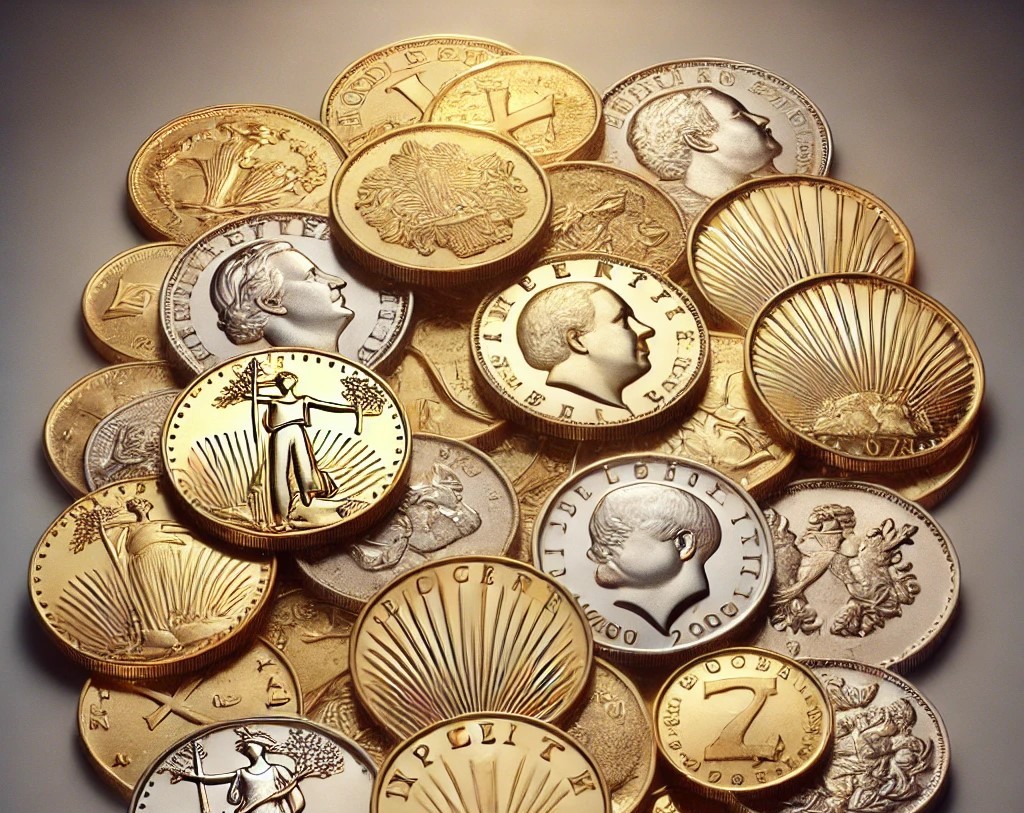
When it comes to collecting coins, there’s more to a coin’s value than just its age or rarity. One often overlooked but important detail is coin alignment. If you’ve ever flipped a coin to check both sides, you might have noticed that the images don’t always line up the same way. This difference in alignment is usually stark and a deliberate design choice, but sometimes slight misalignment can occur due to minting errors.
Whether you’re seeking to spot if a coin has a hidden enhanced value, or simply enjoy understanding why certain coins are made differently, then this post should help you appreciate your collection even more. We’ll investigate exactly what coin alignment is, why it matters, and how to spot it in your gold and silver coins.
Coin alignment refers to the orientation of the images on the front (obverse) and back (reverse) sides of a coin. When you flip a coin vertically—meaning you rotate it around its horizontal axis—the images on both sides should either line up perfectly or be intentionally offset. This design choice varies depending on the country and the mint that produced the coin.
In general, there are two main types of coin alignment. The most common is where the coin reverse is orientated the same way as the front, also known as standard die axis. In other words, the head and tail are the same way up. The alternative is when the back of the coin seems upside down when compared to the obverse. This type of alignment is also commonly referred to as reverse die axis, to explain the inverse facing images.
Typically, the type of coin alignment is chosen by the mint and tends to be consistent in certain regions. However, in the UK for example, coins were historically minted with a reverse alignment up until 1887. The new Jubilee portrait of Queen Victoria marked the change for UK coins to be produced with the standard die axis, with both sides of coins facing the right way up.
Understanding coin alignment is crucial for collectors because it can influence the grading and value of a coin. Coins that don’t align as intended due to a minting error, known as coin rotation, can sometimes be more valuable, depending on the rarity and desirability of the mistake. Whether you’re handling a historic gold piece or a modern silver collectible, being aware of its alignment helps you better understand its design and value. More importantly, if your coin has the complete opposite alignment to all others of its type, rather than slight coin rotation, it could well be counterfeit.
Free ultimate guide for keen precious metals investor
Coins around the world can have different alignments depending on where, when, and how they were minted. These alignments aren’t random; they follow specific standards that have been established over centuries. Understanding the types of coin alignments is key to recognizing the unique characteristics of coins from various regions. Below, we’ll explore the two most common alignments—Coin Orientation and Medal Orientation—as well as some interesting variations you might come across.
Coin Orientation, commonly referred to as the U.S. Standard, is the alignment used for most coins minted in the United States. In this type of alignment, if you hold the coin upright and flip it vertically (top to bottom), the image on the opposite side will appear upside down. This is intentional and a characteristic of many U.S. coins, including famous ones like the Lincoln Cent and the Washington Quarter.
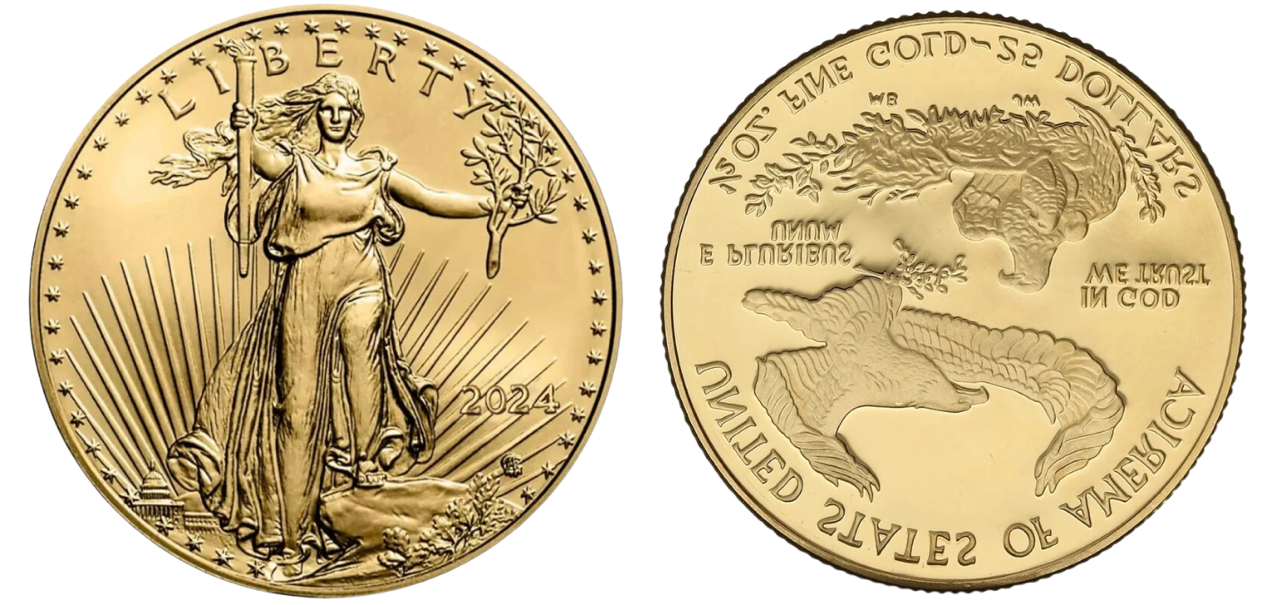
US coins such as Eagles feature coin orientation
Medallic Orientation, often known as the European Standard, is the alignment used in many European and other international coins. In this alignment, when you hold a coin upright and flip it vertically, both sides will remain upright and aligned in the same direction. This type of orientation is typical in countries like France and the United Kingdom and is used for coins like the British Pound, the Euro, and gold coins such as Britannias and Sovereigns.
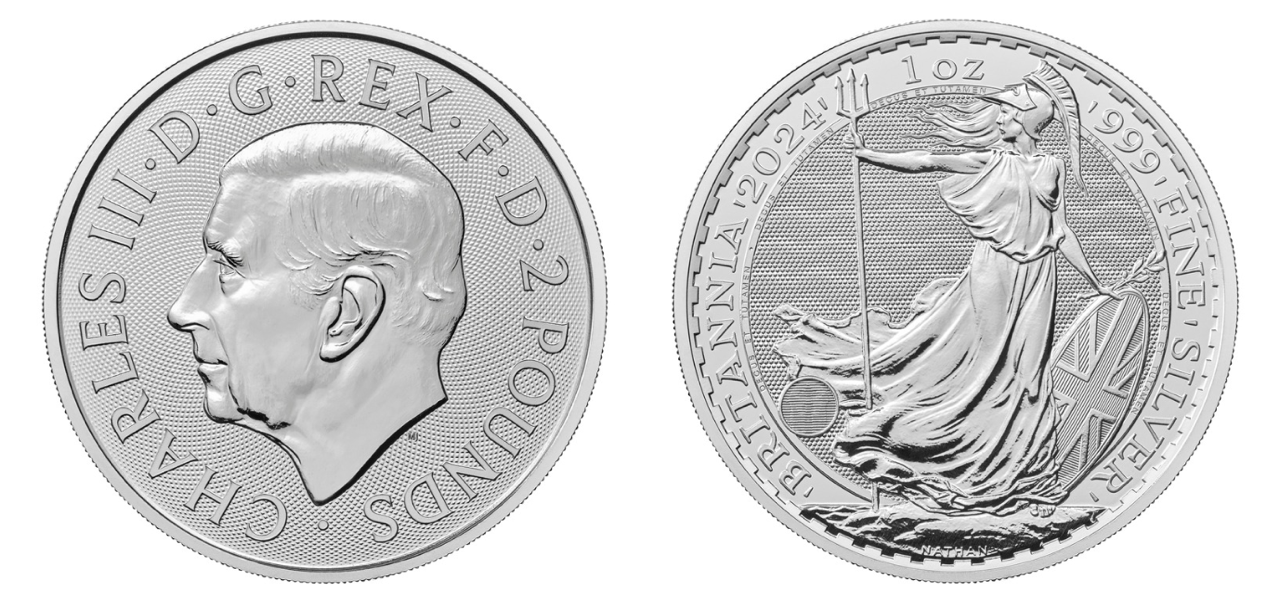
UK coins such as the Britannia feature medal orientation
While most coins follow the standard alignments, there are variations that occur, often due to minting errors. These variations can result in coins with misaligned images when flipped, a condition known as a rotated die error. Instead of images appearing at complete 180 degrees to one another, typically the misalignment may only be a few degrees.
Depending on the severity and rarity of the error, these misalignments can make a coin more valuable to collectors. Some coins are intentionally designed with unique alignments for commemorative or special editions, adding another layer of interest for enthusiasts.
In the United Kingdom, coins were historically minted with coin orientation (reverse die axis) due to the influence of earlier minting practices and traditions. This approach was primarily a reflection of the historical ties between British coinage and the coinage practices of other countries, particularly the United States, which also used coin orientation.
Within the realm of modern gold Sovereigns, the initial portrait of young Queen Victoria, marks the final batch of gold coins to be minted with a reverse die axis. This often confuses many gold investors who buy a selection of historical Sovereigns and notice these coins are orientated differently to the rest.
The coins with the Victoria Young head obverse portrait (or bun head portrait) featured the St. George & Dragon reverse at 180 degrees, or upside down, to the monarch. The launch of the updated Jubilee portrait, as Queen Victoria aged, marked the change to the modern-day standard die axis.
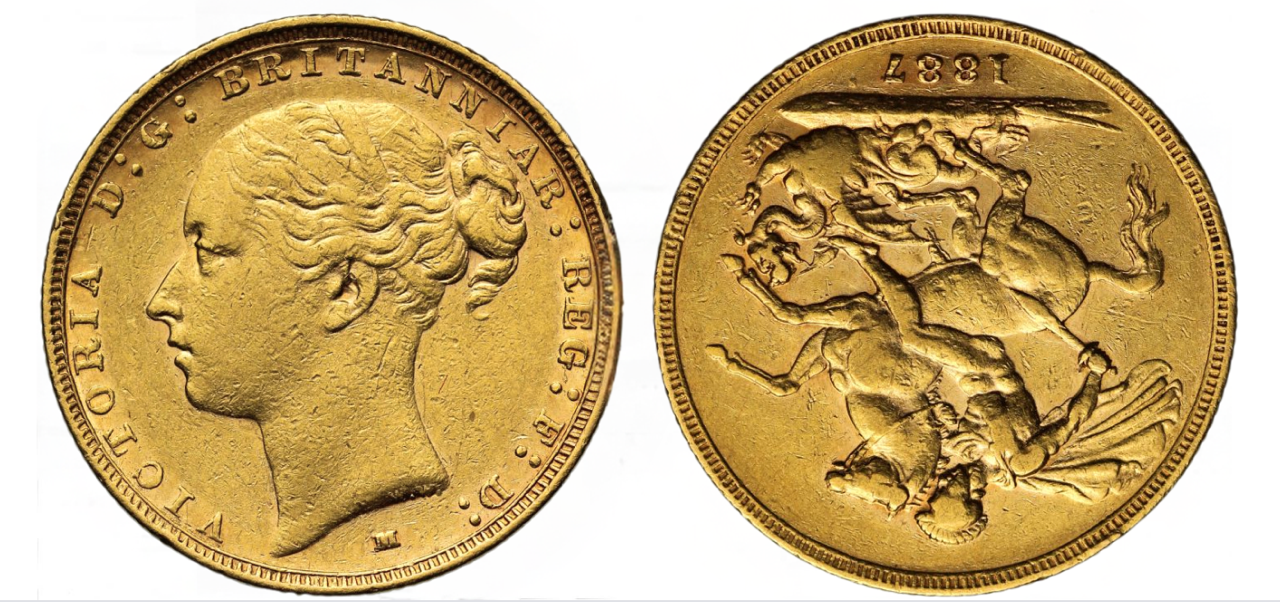
The Young Victoria Portrait coin was the final UK Sovereign to mint its front and back at 180 degrees
The historical use of coin orientation in the UK was shaped by a combination of tradition, practicality, and international influence, all of which played a role in the country’s rich numismatic history. Here are some of the main reasons for the traditional reverse die axis coins.
Medal orientation was especially practical for coins that were intended to be displayed as part of medals or decorations worn on clothing. When a coin or medal is hung from a ribbon on a jacket, the design should ideally be aligned so that both the obverse (front) and reverse (back) are upright when viewed by someone facing the wearer.
This ensures that the imagery and inscriptions on both sides are clearly visible and properly orientated when turning the coin left or right, enhancing the visual impact of the coin or medal. This made it far simpler for the wearer to show off their coin.
Coins and medals often carried significant symbolic meaning, representing authority, honour, or achievement. The use of medal orientation ensured that the symbols, portraits, and inscriptions were presented in a dignified and consistent manner when displayed. This was important in contexts where the visual appearance of the coin or medal was meant to convey power, status, or recognition.
The UK’s use of ‘coin orientation’ can be traced back to a time when the country was developing its own distinct identity in terms of currency. As the British Empire expanded and engaged in international trade, there was a practical aspect to aligning British coins with the practices of other nations, particularly those using similar alignment standards. For instance, many countries that were part of or influenced by the British Empire adopted coin orientation as a standard, creating a uniformity that facilitated trade and commerce.
In the early days of coin production, the minting process was less advanced than it is today. The use of coin orientation may have been a practical choice influenced by the limitations and capabilities of early coin presses and dies. Aligning coins in a consistent way helped ensure that the intricate designs on both sides were properly struck, reducing the risk of errors.
However, in the 20th century, the UK shifted to medal orientation, aligning with European practices. This change reflected a broader trend towards standardization and modernization in coinage, as well as the evolving relationships between European nations in the post-war period. The switch to medal orientation made British coins more consistent with the practices of neighbouring European countries, particularly as Europe moved towards greater economic integration.
Our automated portfolio builder will provide suggestions based on various investment objectives
Checking the alignment of a coin is an essential skill for any collector or enthusiast. Proper alignment not only adds to the aesthetic appeal of a coin but also helps in identifying potential minting errors or variations that could increase a coin’s value. Fortunately, you don’t need advanced tools to check a coin’s alignment—just a careful eye and some basic techniques will do the trick.
One of the simplest and most effective methods to check coin alignment is the 180-degree flip test. This quick test helps you determine the basic alignment of any coin without needing specialized equipment. If you notice that the reverse image is slightly or significantly off from what is expected, this could indicate a rotated die error, which might make the coin more valuable.
Here’s how it works:
Start by holding the coin with the obverse (front side) facing you. Make sure it’s positioned upright, with the design or portrait in the correct orientation.
Rotate the coin around its horizontal axis (flip it top to bottom) while keeping it at eye level.
If the reverse image appears upside down, the coin has coin orientation (common in U.S. coins). If it remains upright, the coin has medal orientation (common in European coins).
For more precise alignment checks, especially if you suspect a misalignment or want to assess a coin’s rotation degree, using specific tools and techniques can be beneficial. By combining the 180-degree flip test with these more advanced tools, you can accurately assess the alignment of your coins, helping you to identify valuable errors or simply to ensure that your coins are correctly oriented and well-preserved.
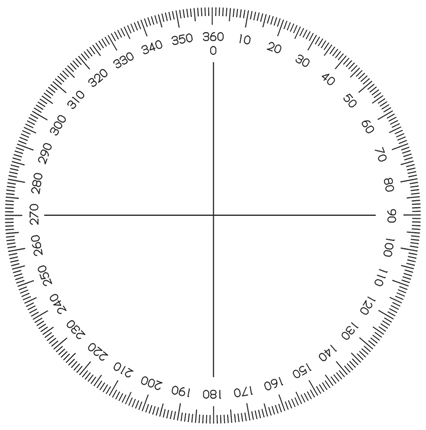
A rotation degree chart is a handy tool that helps measure the exact degree of any misalignment. These charts usually feature a circle with degree markings from 0 to 360. To use it:
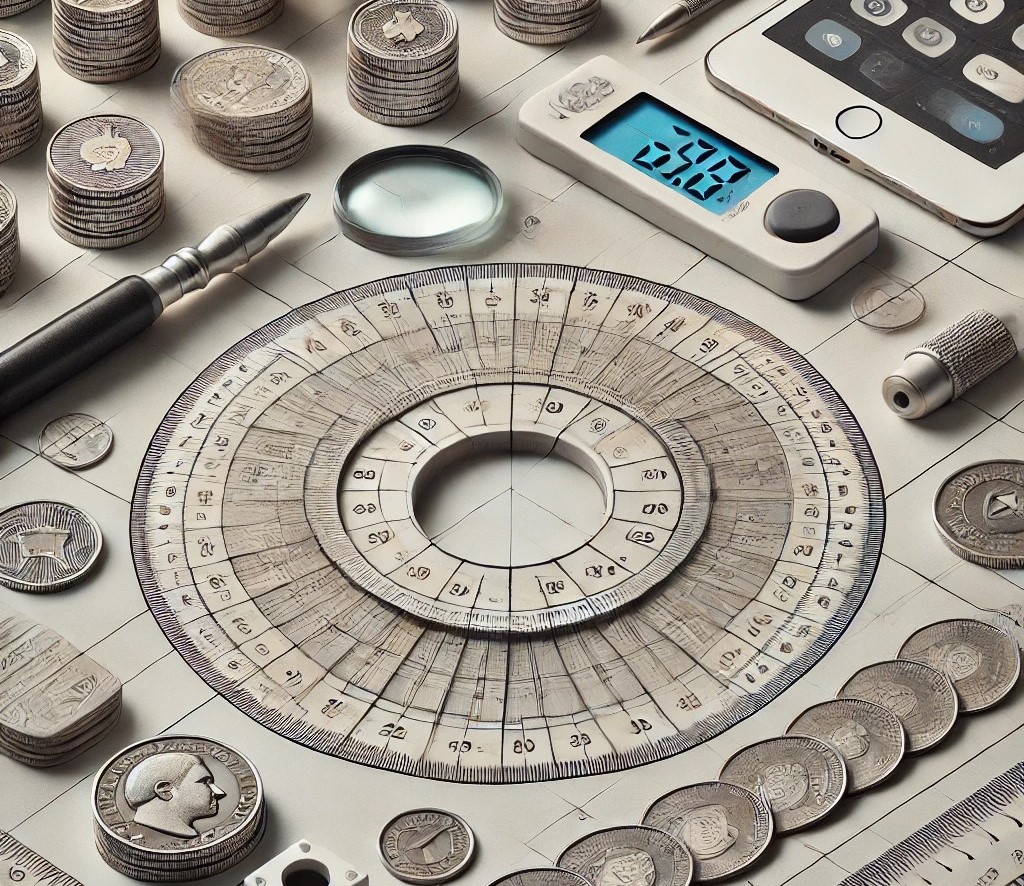
For coins with intricate designs or for more detailed inspection, a magnifying glass or a loupe combined with an alignment grid can help. The grid provides a clear background that makes it easier to judge the coin’s orientation and detect any minor rotation that might not be obvious to the naked eye.
There are also digital tools and apps available that allow you to upload images of your coins and automatically check for alignment and rotation. These tools can be especially useful for collectors who want to maintain detailed records of their collection.
Throughout history, many gold and silver coins have featured unique and notable alignments that reflect the practices of their respective mints, periods, and cultures. Understanding these alignments not only adds depth to your appreciation of these coins but can also reveal interesting stories behind their production. Below, we’ll explore some famous gold and silver coins, focusing on their alignments and what makes them stand out.
The American Gold Eagle, one of the most popular gold bullion coins in the world, is struck with coin orientation, consistent with U.S. minting standards. When you perform the 180-degree flip test on this coin, the reverse side, featuring the iconic image of a family of eagles, appears upside down in relation to the obverse.
The British Sovereign, a historic gold coin first minted in 1817, originally used coin orientation, reflecting the practices of the time. However, modern Sovereigns now follow medal orientation, keeping both sides upright when flipped, in line with the broader trend in British coinage.
This classic gold coin, minted during the reign of Napoleon Bonaparte and later French rulers, follows medal orientation. The obverse typically features a portrait of the ruler, while the reverse shows symbols like the Napoleonic eagle or the Gallic rooster, both remaining upright when the coin is flipped.
The Morgan Silver Dollar, a beloved U.S. coin from the late 19th and early 20th centuries, is an example of coin orientation. When flipped, the reverse, featuring the heraldic eagle, appears upside down, a characteristic of U.S. silver coins from that era.
The Silver Britannia, one of the UK’s most famous bullion coins, follows medal orientation. This means that the obverse side, showcasing the portrait of Queen Elizabeth II, and the reverse, featuring Britannia herself, remain aligned when the coin is flipped vertically. This orientation is standard for British coins and reflects their emphasis on consistent presentation.
The Mexican Silver Libertad is another well-known coin that features medal orientation. The obverse displays the national coat of arms of Mexico, while the reverse shows the iconic Winged Victory statue. Both sides are designed to remain upright when the coin is flipped, following the medal orientation standard.
Coin alignment is a fascinating aspect of numismatics, but it’s also one that’s often misunderstood. Many collectors, especially those new to the hobby, may have misconceptions about what alignment means and how it affects a coin’s value and authenticity. Let’s clear up some of the most common myths and misunderstandings.
One common misconception is the confusion between coin alignment and coin rotation errors. Coin alignment refers to the intended orientation of the images on the obverse and reverse sides of a coin, as designed by the mint. In contrast, coin rotation errors occur when the die that strikes one side of the coin is misaligned during the minting process, resulting in an unintended rotation of the image.
Some collectors mistakenly believe that any coin with an unusual alignment is a rare error and therefore valuable. However, true coin rotation errors are specific and measurable deviations from the standard alignment and are relatively uncommon. Understanding this distinction is important to accurately assess a coin’s condition and potential value.
There are several myths about coin alignment that often circulate among collectors and the general public:
Not all coins with alignment variations are rare or more valuable. While significant misalignments (like a 90-degree or 180-degree rotation) can be of interest to collectors, slight misalignments are relatively common and typically do not add much value.
Another misconception is that coins with medal orientation are somehow less legitimate or are actually medals rather than coins. In reality, medal orientation is just a standard used by certain countries and mints and does not detract from a coin’s authenticity or status as legal tender.
Some believe that all coins should have the same alignment, regardless of their origin. However, alignment standards vary widely by country and mint, so it’s normal to encounter coins with different alignments. Knowing the standard alignment for coins from a specific country can help you avoid unnecessary concerns.
Find out what they're worth now
Coin alignment can play a significant role in determining the value of a coin, particularly for collectors and numismatists who seek out rare or unusual pieces. Understanding how alignment affects a coin’s value requires looking at both the role alignment plays in coin grading and the broader market trends that influence prices. Let’s explore these factors in more detail.
In the world of coin grading, alignment is one of the many aspects considered by professional grading services. It may seem pointless to have a newly minted coin appraised, but alignment is one of the main areas that can vary. While the condition of the coin—such as its lustre, wear, and strike—is usually the most critical factor, alignment can also influence the final grade.
Perfect Alignment
Coins with perfect alignment, where the obverse and reverse are positioned exactly as intended by the mint, are generally seen as being of higher quality. This precise alignment indicates a well-executed minting process, contributing to the overall grade.
Rotated Die Errors
When a coin is struck with a misaligned die, resulting in a noticeable rotation of the reverse image, this can be considered a minting error. Depending on the degree of rotation and the rarity of the error, these coins can sometimes receive a premium grade. However, slight misalignments, which are common, usually do not significantly affect the grade or value.
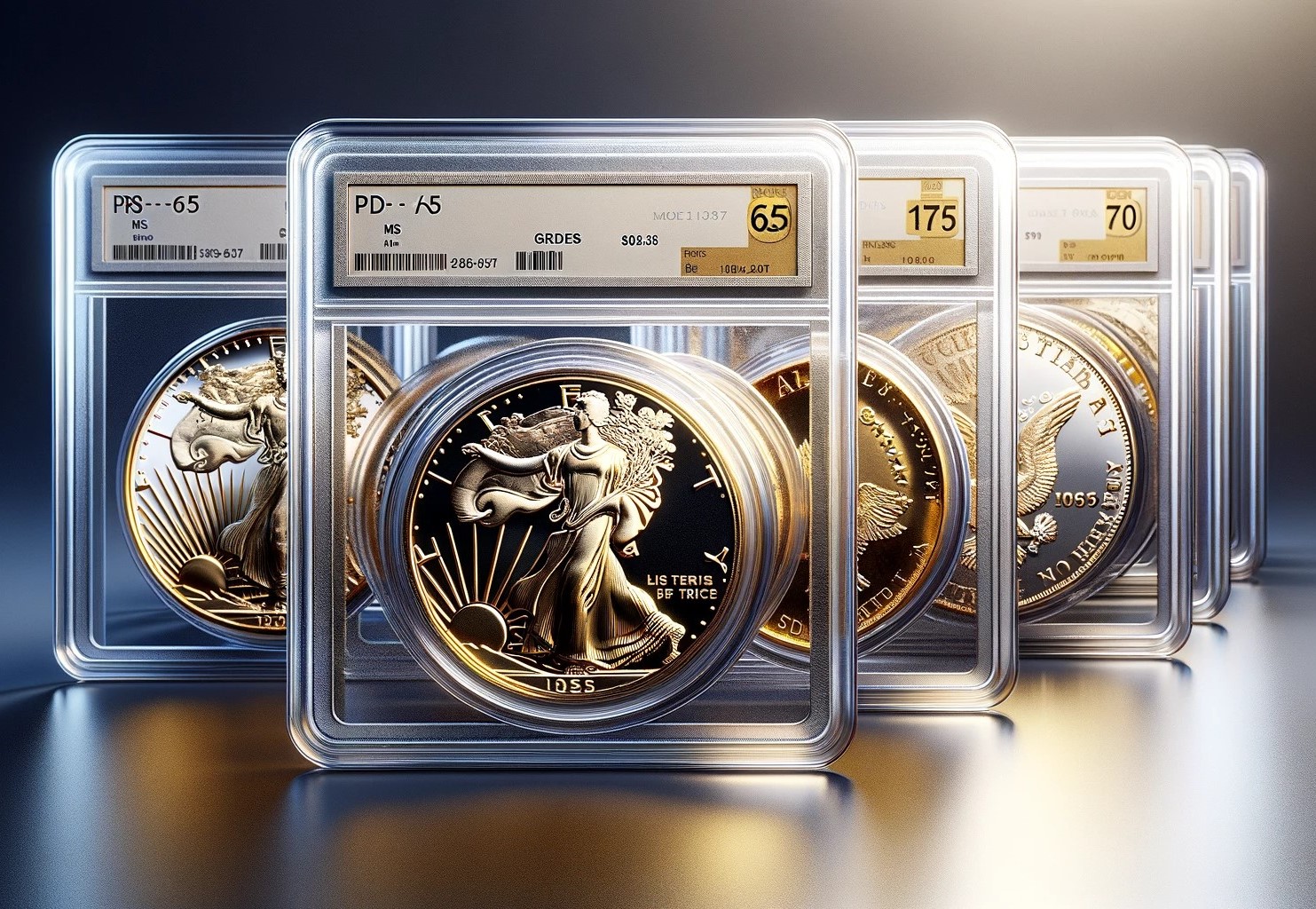
Obverse and Reverse Alignment is a Factor in Coin Grading
The value of older coins such as Victorian Sovereigns can vary considerably depending on rarity, with alignment being one factor. As preciously discussed, the switch from coin to medal alignment during the Victorian reign tends to confuse some Victorian Sovereign holders who believe their coin has rare alignment. The impact of alignment variance on coin prices can vary widely, depending on several market factors:
Desirability of Errors
Coins with significant alignment errors, such as a 90-degree or 180-degree rotation, can be highly sought after by collectors, especially if the error is well-documented and rare. These coins often fetch higher prices at auctions and among specialized collectors. Just check your coin is authentic.
Rarity vs. Commonality
Coins with common alignment characteristics, like those following standard coin or medal orientation, typically do not see a price boost based solely on alignment. However, if a well-known series of coins suddenly has an unexpected alignment variation due to a minting mistake, this can drive up demand and prices.
Collector Interest
The overall interest in alignment-related errors can fluctuate with market trends. At times, certain types of errors might become more popular, leading to a temporary increase in value. Conversely, if the market is focused on other aspects, such as design features or historical significance, alignment errors might have less of an impact on price. As with any asset, it’s only worth what someone will pay at the time!
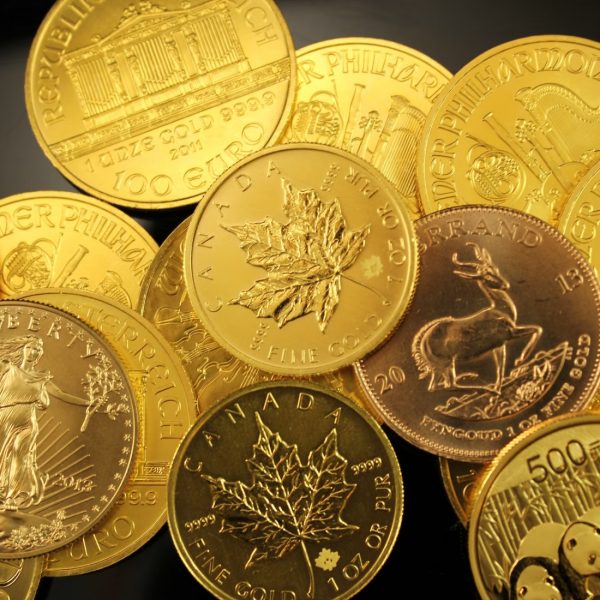
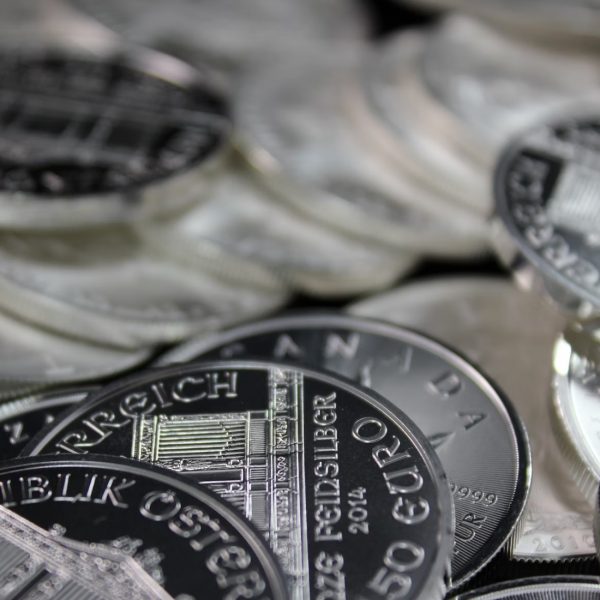
Coin alignment, often used in the U.S., means that when you flip a coin vertically, the reverse side appears upside down. Medal alignment, common in Europe, keeps both sides upright when flipped vertically.
You can perform a simple 180-degree flip test: hold the coin with the obverse facing you, flip it top to bottom, and check if the reverse is upright (medal alignment) or upside down (coin alignment).
Alignment usually doesn’t affect value unless there’s a significant error, like a rotated die, which can make a coin rarer and more valuable to collectors. Always check your coin’s authenticity if alignment differs from the standard for that coin.
Different countries have historical and practical reasons for their chosen alignments. For example, the U.S. uses coin alignment, reflecting its minting traditions, while many European countries use medal alignment for better display.
Yes, if the misalignment is due to a rotated die during minting, it’s considered an error. Depending on the degree and rarity of the rotation, such errors can increase a coin’s value.
The obverse-reverse orientation of a coin refers to how the images on both sides align. In coin alignment (used in the U.S.), the reverse appears upside down when the coin is flipped vertically. In medal alignment (used in Europe), both sides remain upright when flipped.
Live Gold Spot Price in Sterling. Gold is one of the densest of all metals. It is a good conductor of heat and electricity. It is also soft and the most malleable and ductile of the elements; an ounce (31.1 grams; gold is weighed in troy ounces) can be beaten out to 187 square feet (about 17 square metres) in extremely thin sheets called gold leaf.
Live Silver Spot Price in Sterling. Silver (Ag), chemical element, a white lustrous metal valued for its decorative beauty and electrical conductivity. Silver is located in Group 11 (Ib) and Period 5 of the periodic table, between copper (Period 4) and gold (Period 6), and its physical and chemical properties are intermediate between those two metals.